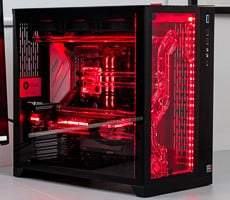ASUS ROG G752VT Gaming Laptop Review: G-Sync And Skylake United
As for power consumption, we measured 51W from the wall when idle and 187W when both the CPU (Prime 95) and GPU (Furmark) were stressed.
|


In our web browsing the test, the G752VT gave its last gasp after 154 minutes, or just over an hour and a half. You'll notice its predecessor, the G751JY, actually lasted 34 minutes longer in this test. How can that be?
Having a Skylake foundation should yield better battery life, but we suspect the two strips of LED lighting on the G752VT's are the culprits. There's no way to turn them off like you can with the keyboard's backlight (which we disabled for this test), so you're essentially trading a bit of battery life for bling.
Battery Boost
Bear in mind that the aforementioned battery benchmarks are run at the same settings for each laptop. It's the best way of comparing systems and and the advances made in hardware components and the battery itself, but they don't take into account software technologies that might be available.
In this case, you can turn on Battery Boost in NVIDIA's GeForce Experience GUI. When enabled, Battery Boost dynamically adjusts GPU performance for more battery life by holding frame rates to around 30 FPS. That way you can still enjoy a smooth gaming experience, but not run out of battery as fast.
NVIDIA claims up to two times the battery life with Battery Boost, and while it varies by game, there were instances where we've seen exactly that. See here for more information.







